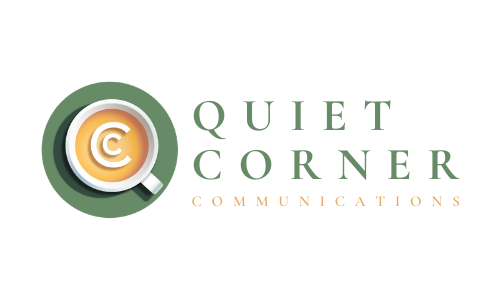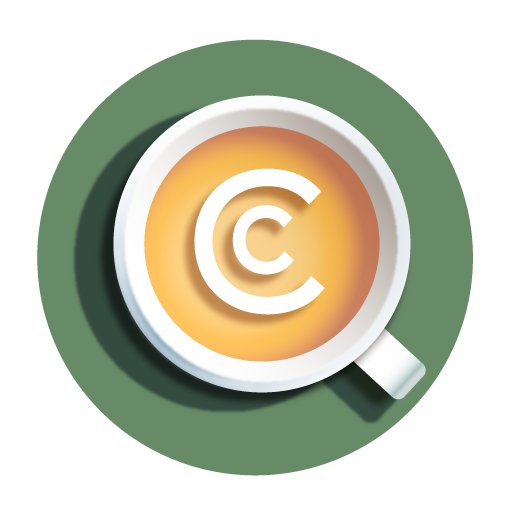The Tea: Evergreen SEO Tips for Small Businesses
Search engine optimization (SEO) — a practice that, in some circles, is synonymous with keyword stuffing and click-bait — is the bane of every writer’s existence. No one working on an in-depth story about a subject that fascinates them wants to hear about writing subheads for search engine rankings or metadata that pleases Google… but it’s necessary.
“search en·gine op·ti·mi·za·tion
the process of maximizing the number of visitors to a particular website by ensuring that the site appears high on the list of results returned by a search engine.”
The good news is the age of keyword stuffing is over — or at least it should be. Somewhere along the way, Google realized its algorithm was leading to a glut of crappy content. People quickly learned how to game the system and as content creation got easier and easier, the web was flooded with sites that had SEO’d posts to within an inch of their lives — making the content all but unreadable.
Things have changed. And while I’m no great advocate for SEO — yes, I still mutter under my breath about it — there are some tips I think every content marketer can and should follow.
Rule #1: SEO should not guide your content
This is going to be controversial, but the long-time journalist in me just can’t put SEO above everything else when it comes to content. Certainly, it’s smart to do your research to understand what your target audience is looking for, and what pain points you can help them solve. You want to have a general understanding of the keywords that drive traffic in your niche, but please, please, please don’t be a slave to that research.
Create content because it’s interesting — not to make a search engine happy.
If you’re an expert in your subject matter, writing authoritatively about your topic, and have an understanding of your audience, you’re going to write content that naturally uses keywords appropriately and addresses the issues people care about.
The reality is that your competitors are doing the same research you are. Unless you truly master the art of SEO — and have a huge team constantly revamping your content in accordance with the latest trends — small businesses probably aren’t going to get to the top of the Google rankings through SEO alone (unless you’re in a very small and specific niche).
The goal should be to build a loyal audience through great content. When you have an engaged audience, you’ll find that people come back again and again, share your content on social media, and help you spread the word. And, luckily, Google takes that all into consideration too!
With all of this in mind, I’ve put together a list of evergreen SEO tips for small businesses. If you concentrate on creating content that adheres to these rules, you should be able to ride the waves of SEO with relative success.
3 SEO tips for small businesses
Establish authority to drive traffic
After the keyword-stuffing debacles of early SEO, Google realized that authority mattered. Just because “Frank’s House of Trash” had mastered the art of SEO didn’t mean they actually created good content. Now, search engines recognize the difference between authoritative content and sites that are just trying to please the algorithm. There are a couple of ways to help build your reputation on this front:
Word count — The accepted wisdom is that Google loves a 2,000-word post! And that’s not untrue, however, some experts argue that this is more of a correlation than causation. The truth is, your content should be as long as it needs to be to fully cover the topic. Too many content marketers go to one extreme or the other — writing short (300-500 words) content aimed at short attention spans or content that is so overly long that I’ve often found myself saying, “This is like three different articles combined into one.”
Our advice: Shoot for 1,000 words. A little over or under is fine as long as you’ve covered the topic with authority, and aren’t stuffing in unnecessary information just to reach an arbitrary word count.
Think about links — Linking to reputable and authoritative content from your own content is a signal to Google that you know what you’re talking about. But backlinks are also important — so important that hardly a week goes by that I don’t get an email asking me to add some link to an article. For the record, I hate these emails and usually ignore them because more often than not they want me to add a link that is irrelevant to the content. Recently, I had a company ask me to replace another company’s link with theirs — even though the link was in someone’s bio!
Our advice: Don’t harass people with spammy requests to add your link to their posts. Instead, focus on providing guest content to blogs that backlinks to your site — even if it’s just from your bio. This will also help spread your name to a bigger audience organically.
Structure matters, especially to bots
The structure of your web articles is increasingly important. I have one client that I help with SEO by making changes to older articles that are no longer performing well and editing new articles written by an SEO expert. Why does an SEO expert need my help? Well, being an SEO writer doesn’t necessarily make you a good writer and they often need assitance making articles more readable (or even just to follow the company’s style guide). But working on these projects has allowed me to passively absorb the latest in SEO, and one thing I’ve noticed is that the first paragraph (or two) is increasingly important.
Google wants you to really spell out what your article is about and what it will “do.” This is, in part, because of the increasing importance of featured snippets. How often have you done a Google search and not even clicked on the results because you got the answer you needed in a featured snippet on the results page? (Honestly, when you write that out, it seems a bit counterintuitive to actually want to be a featured snippet… though the numbers must work out in the long run.) Here are a couple of other structural hacks you should keep in mind when creating content:
Subheads are easy to optimize — I have learned to embrace the subhead as my best ally in the fight against search engines. We all know that people love listicles, and this is largely because they are easy to read. You can scan them quickly and find the specific information you need! But we also know that listicles are also kind of garbage, right? I like to think of subheadings as bullet points that help guide the reader and the search engine in much the same way — and try to use them to guide the reader.
Our advice: Resist the temptation to get cute with your subheads, and instead make them informative and SEO-friendly. No one is going to read your content because you have a pithy subhead buried 700 words in, but SEO-friendly subheads will help people find your content through search.
Don’t neglect your images — It’s easy to think about images as eye-candy for your audience, not as an important part of your SEO strategy. But Google indexes everything, and if you put just a few minutes into adding thoughtful metadata to your pictures, it can have a significant impact on your SEO.
Our advice: Most website builders allow you to enter some kind of description for your image. Don’t just ignore it — especially if your image adds real value (i.e. is a chart depicting an important point, or shows your business in action) to the article. This also helps with accessibility for vision-impaired visitors to your site.
Concentrate on local listings
For most small businesses, it doesn’t matter if someone on the other side of the globe is seeing your content. You want to reach people who are relatively local and can actually visit/hire you. If you don’t already have a Google My Business Page, it’s a must! It’s how most people are going to find you. Solicit reviews from satisfied customers to help boost your profile, and when you’re creating content keep your local audience in mind. When you’re posting on social media, think about creating offers and incentives for locals. (“Get dessert on the house if you book this weekend’s reservation before 5 p.m. today!”) If you can capture your local audience, that following will inevitably grow as your loyal customers help spread the word.
If you keep these tips in mind, SEO can be a manageable part of your content marketing strategy. But if you’re still stuck and need help creating consistent content, we can help! Just send me an email to schedule a free consultation.

